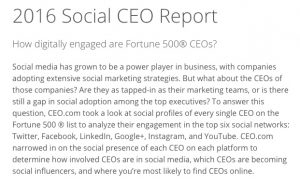 The New York Times last week published the results of a fascinating research project entitled The Follower Factory, that describes how firms charge to add followers, retweets, likes and other social interactions to social media profiles. While we aren’t surprised at the report, it highlights why B2B marketers shouldn’t shortcut the process of understanding the substance of an influencer’s following when making decisions about whom to engage. The Times report identifies numerous celebrities from entertainment, business, politics, sports and other areas who have inflated their follower numbers for as little as one cent per follower. In most cases, the fake followers are empty accounts without any influence or copies of legitimate accounts with subtle tweaks that mask their illegitimacy.
The New York Times last week published the results of a fascinating research project entitled The Follower Factory, that describes how firms charge to add followers, retweets, likes and other social interactions to social media profiles. While we aren’t surprised at the report, it highlights why B2B marketers shouldn’t shortcut the process of understanding the substance of an influencer’s following when making decisions about whom to engage. The Times report identifies numerous celebrities from entertainment, business, politics, sports and other areas who have inflated their follower numbers for as little as one cent per follower. In most cases, the fake followers are empty accounts without any influence or copies of legitimate accounts with subtle tweaks that mask their illegitimacy.
The topic isn’t a new one for either of us. Paul wrote a book on the topic more than ten years ago. Real social media influencers get that way through an organic growth in their popularity, because they have something to say and because people respond to them over time. There is no quick fix for providing value.
Twitter is a popular subject for analysis because it’s so transparent: Anyone can investigate follower quality and root out fake accounts or bots by clicking on the number of followers in an influencer’s profile. Other academic researchers have begun to use Twitter for their own social science research, and a new book by UCLA professor
Paul and David review some of their time-tested techniques to growing your social media following organically, and note the ongoing value of blogs as a tool for legitimate influencers to build their followings.
You can listen to our 16 min. podcast here:

 Our guest for this week’s episode is Ray Grady, the President of CloudCraze. In a
Our guest for this week’s episode is Ray Grady, the President of CloudCraze. In a  This week my podcasting partner Paul Gillin and I talk to Seth Greene about how to market small (and large) businesses using some time-tested direct response marketing methods that begin with creating podcasts. Seth is the author of
This week my podcasting partner Paul Gillin and I talk to Seth Greene about how to market small (and large) businesses using some time-tested direct response marketing methods that begin with creating podcasts. Seth is the author of 
 This week Paul Gillin and I talk to Crowded Ocean’s partners
This week Paul Gillin and I talk to Crowded Ocean’s partners  Instead, Carol and Tom suggest that you examine more closely the different component skills that make up marketing, and staff accordingly. These include product management, corporate marketing, product marketing and IT fluency. The evolved CMO has the backbone of the marketing department, the breadth and understanding of the customer experience and the depth of a new key organizational growth pillar that shapes their point of view. Our guests suggest that the initial full-time marketing insider should be someone that they call “Seth” who is a 28-year-old numbers jockey who can give their sales organization demand generation data.
Instead, Carol and Tom suggest that you examine more closely the different component skills that make up marketing, and staff accordingly. These include product management, corporate marketing, product marketing and IT fluency. The evolved CMO has the backbone of the marketing department, the breadth and understanding of the customer experience and the depth of a new key organizational growth pillar that shapes their point of view. Our guests suggest that the initial full-time marketing insider should be someone that they call “Seth” who is a 28-year-old numbers jockey who can give their sales organization demand generation data.